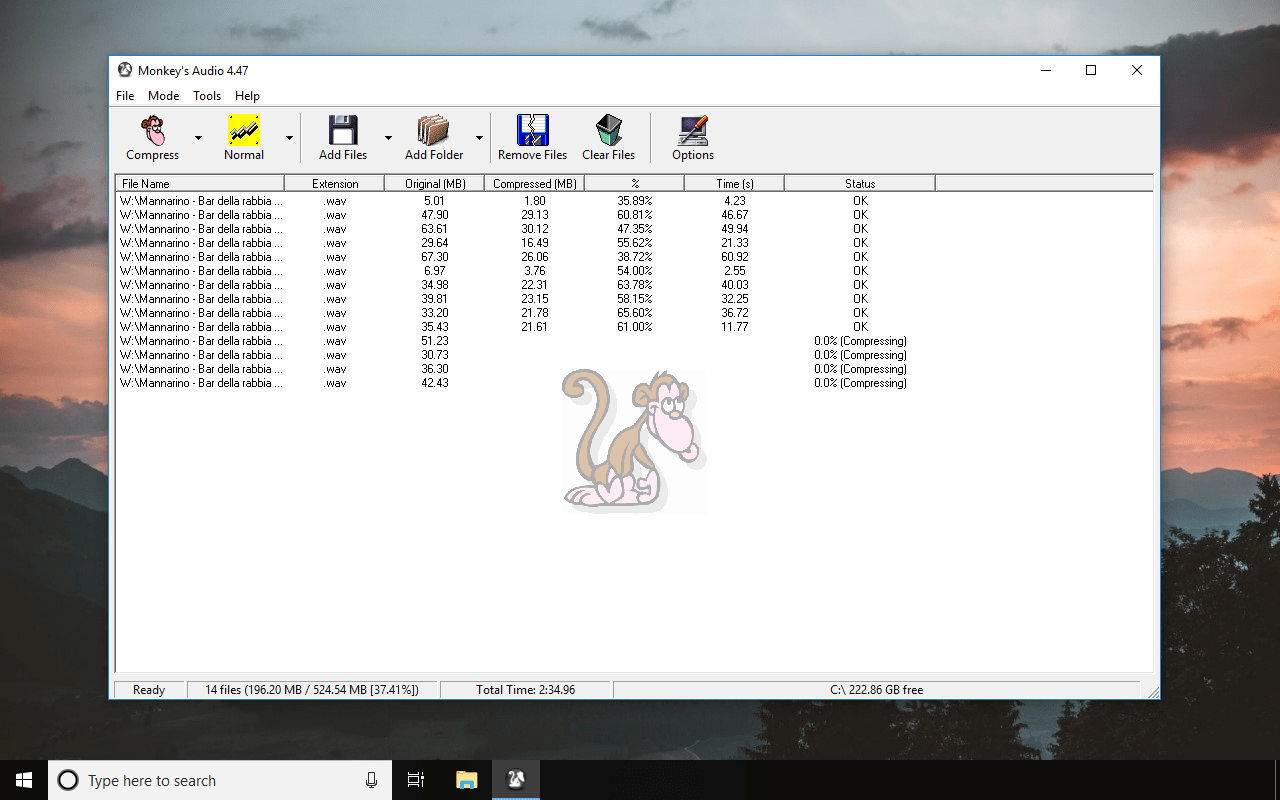

They are better because they take less bits to represent.įor example, say we want to encode this array of numbers (32 bit longs): Once this is achieved the resulting numbers must be written to disk. The goal behind audio compression is to make all of the numbers as small as possible by removing any correlation that may exist between them. Here is a quick list of some prediction equations as shown in the Shorten technical documentation (for different orders): Using different prediction equations and using multiple passes through the predictor can make a fairly substantial difference in compression level.

So in the previous example, what leaves the predictor is this: Most good predictors are adaptive, so that they adjust to how "predictable" the data currently is.įor example, let's use a factor 'm' that ranges from 0 to 1024 (0 is no prediction and 1024 is full prediction).Īfter each prediction, m is adjusted up or down depending on whether the prediction was helpful or not. Then, these predicted values are compared with the actual value and the difference (error) is what gets sent to the next stage for encoding. PX and PY are the predicted X and Y X -1is the previous X value X -2 is the X value two backĪs an example, if X = (2, 8, 24, ?) PX = (2 * X -1) - X -2 = (2 * 24) - 8 = 40.Here is a sample using simple linear algebra: There are virtually countless ways to do this. This stage is what separates one compression scheme from another.

Next, the X and Y data is passed through a predictor to attempt to remove any redundancy.īasically, the goal of this stage is to make the X and Y arrays contain the smallest possible values while still remaining decompressible. The mid (X) is the midpoint between the L and R channels and the side (Y) is the difference in the channels. In this case, a mid (X) and a side (Y) value are encoded instead of a L and a R value. There is often a great deal of correlation between the L and R channels, and this can be exploited several ways, with one popular way being through the use of mid / side encoding. The first step in lossless compression is to more efficiently model the channels L and R as some X and Y values. Lossless compression can be broken down into a few basic steps.


 0 kommentar(er)
0 kommentar(er)
